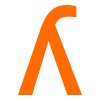
Virtual Reality Exercise for Stroke Rehabilitation in Inpatients Who Are Unable to Stand
StrokeThe purpose of this study is to determine if the addition of 10 to 12 sessions of sitting balance exercises using virtual reality training will provide additional gains in balance ability and function over standard inpatient rehabilitation in stroke patients.

Effect of a Physiotherapy Protocol for Gait and Functional Recovery After Stroke
StrokeThe purpose of this study was to identify and evaluate the effect of a new protocol of physiotherapy to retrain walking ability after stroke in subjects older than fifty-five. This protocol was composed of specific, clearly defined and reproducible techniques, based on clinical and functional criteria.

Electrical Stimulation of the Paretic Upper Limb in the Early Stroke Phase
StrokeAcuteThis study evaluates the effect of electrical somatosensory stimulation (ESS) on the restoration of upper limb functioning in acute stroke patients. The effect will be measured at the end of the intervention and six months post-stroke. We expect that ESS facilitates the restoration of upper limb functioning and the brain reorganization following stroke.

Safety and Tolerability of BIII 890 in Patients With Acute Ischemic Stroke
StrokeThe objective of this study is to assess the safety, tolerability and pharmacokinetic characteristics of BIII 890 after intravenous infusion in acute ischemic stroke patients.

Effect of Oculomotor and Gaze Stability Exercises on the Improvement of Balance After Stroke
StrokeDistorted; BalanceIndividuals older than 60 years old, discharged after suffering brain stroke with referral to the rehabilitation outpatient clinic, will be assessed for orthostatic balance. Patients with positive Romberg test are invited to participate in the trial. Participants will be randomized to either the current rehabilitation protocol or to an supplemental intervention focused on oculomotor and gaze stability exercises to be applied at home for three weeks. Participants will be assessed with standardized, validated tools.

The Immediate Effect of Electrical Stimulation Transcranial Direct Current (tDCS) Associated With...
STROKEBackground: Transcranial direct current stimulation (tDCS) is currently considered a beneficial method for patients with neurological problems due to the modulation of cortex activity as well as the enhancement and prolongation of functional gains achieved during physical therapy. Purpose: The aim of the proposed study is to evaluate the immediate effects of a session of tDCS over the primary motor cortex combined with functional electrical simulation (FES) on electrical activity of the tibialis anterior muscle, balance and distribution of plantar pressure in individuals with hemiparesis stemming from a stroke. A further aim is to determine whether the effects of the combination of both stimulation methods are better than those achieved when each method is employed alone. Methods/design: A randomized, double-blind, crossover, cross-sectional study will be conducted involving 30 stroke survivors with hemiparesis who meet the eligibility criteria. Evaluations will involve an identification and screening chart, the classification of motor impairment using the Fugl-Meyer Scale, the determination of spasticity of the triceps surae muscle (modified Ashworth scale), electromyography of the tibialis anterior muscle, static balance and cognitive dual-task balance (stabilometry) and plantar pressure. After the initial evaluations, the participants will undergo four interventions: 1) anodal tDCS + placebo FES + active tibialis anterior contraction; 2) placebo tDCS + active FES + active tibialis anterior contraction; 3) anodal tDCS + active FES + active tibialis anterior contraction; and 4) placebo tDCS + placebo FES placebo + active tibialis anterior contraction. tDCS will be administered over the primary motor cortex and FES will be administered over the tibialis anterior muscle. The order of the different protocols will be randomized and both the evaluator and patients will be blinded to which protocol is being administered.

Deficit Fields for Stroke Recovery
StrokeThis study investigates the potential of customized robotic and visual feedback interaction to improve recovery of movements in stroke survivors. While therapists widely recognize that customization is critical to recovery, little is understood about how take advantage of statistical analysis tools to aid in the process of designing individualized training. Our approach first creates a model of a person's own unique movement deficits, and then creates a practice environment to correct these problems. Experiments will determine how the deficit-field approach can improve (1) reaching accuracy, (2) range of motion, and (3) activities of daily living. The findings will not only shed light on how to improve therapy for stroke survivors, it will test hypotheses about fundamental processes of practice and learning. This study will help us move closer to our long-term goal of clinically effective treatments using interactive devices.

Psychoeducation for Transient Ischaemic Attack and Minor Stroke
Transient Ischaemic AttackStrokeTransient Ischaemic Attack (TIA), also called 'ministroke' is characterised by shortlasting symptoms that generally do not cause permanent damage. 'Minor stroke' is a term used to describe a stroke with mild and nondisabling symptoms. TIA and minor stroke patients account for more than half of all cases of stroke and they are at a higher risk to suffer a major stroke. Currently, management of TIA/minor stroke patients is mainly focused on identifying and reducing risk factors for a later stroke. However, people after a TIA often have limited access for further specialist support from stroke-specific rehabilitation services. Although there is variability in the level of recovery and severity of symptoms after TIA and minor stroke, there is evidence that these patients may experience difficulties that affect their quality of life including anxiety and depression. This study aims to develop, tailor and target the delivery of a time-limited group intervention that offers educational, psychological and social support for people following TIA and minor stroke. A qualitative study (Phase 1) will be conducted with service users and experts working with people with TIA/minor stroke to develop the psychoeducational intervention. Following this, we will conduct a feasibility randomised controlled trial in one centre (Phase 2) to explore whether this group psychoeducational intervention for people after TIA and minor stroke carers is acceptable and to determine the feasibility of the proposed evaluation and the sample size needed in a definite trial.

Enhanced Motor Recovery Using Serotonergic Agents in Stroke
Patients With Chronic StrokeThe information derived from this study will be critical to establishing appropriate rehabilitative interventions post-stroke. In particular, traditional use of pharmacological agents to alter motor function post-stroke is directed primarily at reducing the "positive" signs following upper motor neuron lesion, in particular spasticity, or enhanced, velocity-dependent stretch reflex responses to imposed stretch. While pharmacological management of spasticity certainly suppresses clinical and quantitative measures of hypertonia, there is little improvement in functional performance. In contrast, preliminary data on the administration of 5HT agents following neurological injury indicates an increase in motor performance (Pariente 2001) and recovery (Dam 1996), despite an increase in spastic motor activity (Stolp-Smith 1999; see Preliminary Data below). Understanding methods to maximize function following stroke despite potential, short-term increases in spastic motor activity may improve therapeutic intervention strategies. The general objective of this study is therefore to: quantify the effects of short-term SSRI administration on voluntary and spastic motor behaviors in individuals with chronic spastic hemiparesis, identify the changes in impairments and functional recovery of walking ability during BWSTT with the presence or absence of SSRIs.

Reparative Therapy in Acute Ischemic Stroke With Allogenic Mesenchymal Stem Cells From Adipose Tissue,...
Ischemic StrokePhase IIa clinical trial, pilot, single centre, prospective, randomized, double-blind, placebo-controlled, with sequential inclusion of patients
